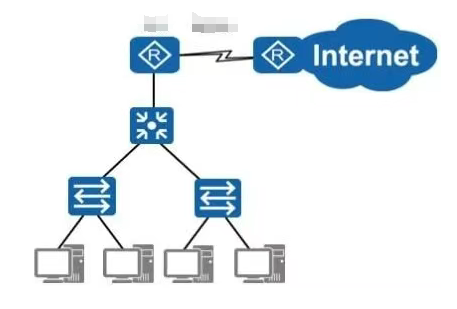Huawei devices static routing configuration
Good evening, everyone!
In the enterprise network, campus network, and even home network, "Internet access" is only the most basic request. Many times, we also need to manually specify routing paths based on changes in network structure to avoid communication disruption, control traffic flow, and even improve security.
And one of the basic capabilities to achieve these goals is what we are going to talk about today -static routing( Static Routing ).
Today, we will talk about the core principles of static routing, typical application scenarios, as well as the configuration method in Huawei devices.
For more information, please scan the WhatsApp QR code below to contact customer service.

01
Is barcode scanning a static route?

·Static routing is a routing path manually configured by a network administrator to specify a fixed route for packets to reach the destination network segment.
·Compared to dynamic routing protocols ( such as OSPF , BGP , etc . ) , it has the following characteristics :
·Simple and intuitive, highly controllable, lack of flexibility and need manual maintenance
02
Scenarios: Common uses of static routing
Typical use cases include:
·Small networks or test environments are not suitable for deploying dynamic routing;
·In a dual export environment, some business flows need to be forced to follow a certain link;
·Avoid dynamic routing for businesses with high security requirements;
·Connect to a third-party network and specify your next jump.
03
Live Playing: How Do Two Segments Interconnect?
PC1 (192.168.1.10) ——Switch——Router——Switch——PC2 (192.168.2.10)
We want PC1 and PC2 to communicate with each other through a router. In the absence of dynamic routing protocols, static routing must be configured.
04
Huawei Device Static Routing by Configuration Example
Suppose the network structure is as follows:
Network segmentA: 192.168.1.0/24 (Connected to GE0 / 0 / 0 interface)
Network segmentB: 192.168.2.0/24 (Connected to GE0 / 0 / 1 interface)
Configure the IP address for the interface

Step 2 : configure static routes ( if there are more subnets )
For example, the router also has a third exit, receiving the 192.168.3.0 / 24 network segment:

The meaning is : Traffic to the 192.168.3.0 / 24 network segment goes through 10.0.0.2 .
Step 3: Host gateway configuration
192.168.1.0 / 24 network segment host, gateway configuration: 192.168.1.1
192.168.2.0 / 24 segment host, gateway configuration: 192.168.2.1
In this way, traffic is transferred through the router and interoperability can be achieved.
05
Static routing applications for multi-link out of the public network
If there are two public network export links:
TelecommunicationsISP (10.1.1.1)
UnicomISP (20.1.1.1)
Different exits can be configured for different purposes:

Note priority and precision : The more " specific " the static route , the higher the priority .
06
FAQs
Q1 : Static routing and default routing have what relationship ?
A : A default route is a special static route that matches any unknown destination and is configured as follows :
ip route-static 0.0.0.0 0.0.0.0
Q2 : Can static routing and dynamic routing coexist ?
A: Yes。Static routing priorities are usually higher than dynamic routing priorities (adjustable by preference) , and are suitable for fixed assignments of important paths.
07
Summary Recommendations
Type of programme | advantage | limit | Recommended Scenarios |
Static routing | Simple and Controllable | It can't be automatically increased. | Small network, fixed path control |
Dynamic routing | Automatically learning, flexible | The configuration is complex and costs learning | Large enterprise network, multi-path convergence |
Hybrid configuration | Fineness + Flexibility | Unified planning and tuning are needed | Medium-to-large networks, cross-domain connections |
It is recommended to use static routing in the initial planning of the network, and then gradually introduce dynamic routing protocols after the scale is extended.
Today's content is shared here! Static routing is an entry-level foundation that all network engineers can bypass and a stable cornerstone of network design. Hope this article helps you lay a solid foundation!
For more Huawei resources, follow the Facebook account & youtube account: Thinkmo Dumps


